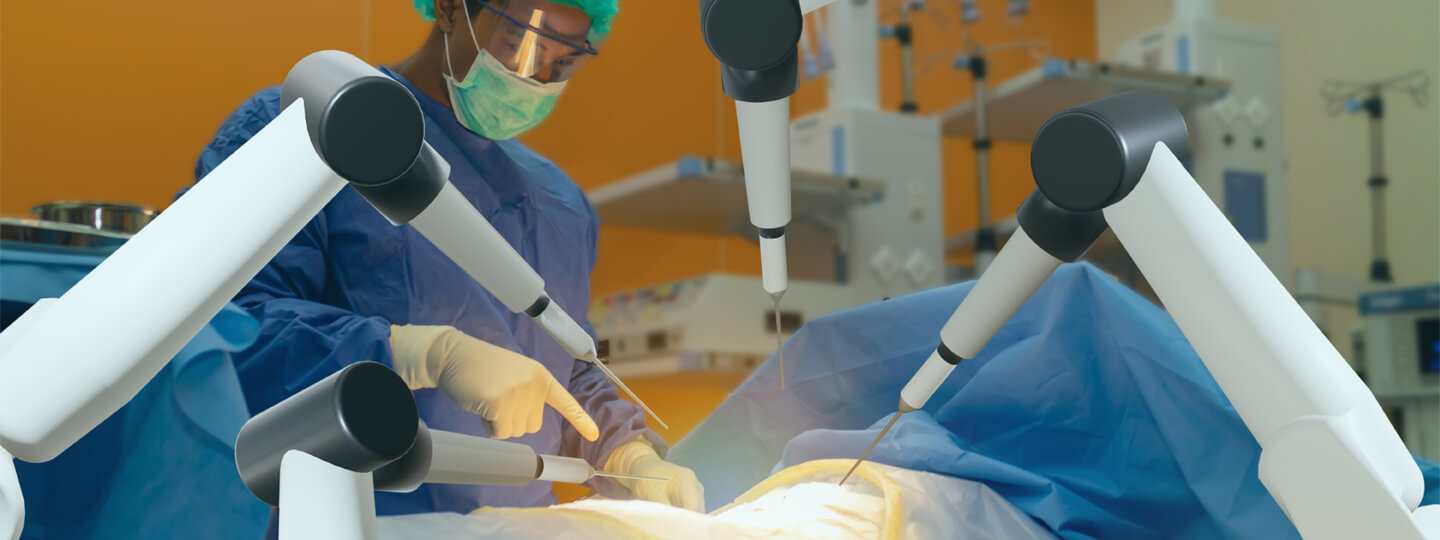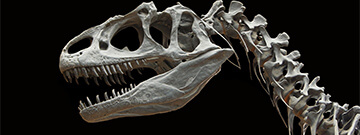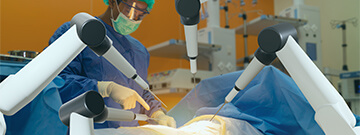
The Future of Hospitals: Robot Surgeons?
Futuristic movies have shown us the endless possibilities of robots. Robotic surgery has topped that list, with numerous new robots able to perform complex surgeries at a much faster and accurate rate.
The medical field is evolving with the times, and many treatments —from artificial organs to precision medicine— are not the same as they used to be. Additionally, robots are now able to do procedures that were traditionally done manually. This method is known as Robotic surgery, sometimes referred to as computer-assisted surgery. Approximately 644,000 robotic surgeries were performed in the U.S. in 2017, and the rate of robotic surgeries has increased dramatically from 1.8% in 2012 to 15.1% in 2018.
How does robotic surgery work?
Robotic surgery is often used for minimally invasive surgery, a procedure in which the surgery is performed through tiny incisions. The smaller incisions in minimally-invasive surgery lead to fewer complications, less blood loss, less recovery times, and most importantly, less pain.
However, there are some downfalls to robotic surgery. In a 2015 study of US robotic surgeries during a 14 year period, 144 deaths, 1,391 patient injuries, and 8,061 device malfunctions were reported. Most of these deaths and injuries have occurred due to burns and singeing in the internal organs. Medical researchers and engineers are taking great steps to ensure that these problems are solved.
As of now, robotic surgery certainly will be a great part of our medical future, and once all issues are solved, it will prove to be a great advancement in technology.
Sources:
“Robotic Surgery.” Mayo Clinic, Mayo Foundation for Medical Education and Research, 26 Mar. 2021, https://www.mayoclinic.org/tests-procedures/robotic-surgery/about/pac-20394974?scrlybrkr =643f94ea ![]() .
.
“About Robotic Surgery at UCLA.” UCLA Robotic Surgery, https://www.uclahealth.org/robotic-surgery/what-is-robotic-surgery ![]()
Scientific Peer Review by Alysia Mandato
Aneri Shethji:
Aneri Shethji is a 10th grader at North Allegheny Intermediate High School. She is very passionate about science and writing and enjoys getting involved with the community. In her free time, Aneri spends time with friends and family and loves getting outside. She can’t wait to learn more about all that science has to offer, and help others learn it too!

On April 8, 2024, we will witness a mesmerizing event. A total solar eclipse is upon us, and here at the Science Center, we can explore this celestial phenomenon in many ways.
But first, what is this event? A ...

Climate change is a big deal. We’ve all seen news stories about greenhouse gas emissions, rising temperatures, and the hole in our ozone layer. However, what tends to sometimes be overlooked is climate change’s ...

In the captivating world of health care, a fascinating transformation is taking place—a rise in Artificial Intelligence, or AI! Picture a world where smart machines team up with doctors to revolutionize medicine, making ...

Hydroponics, a contemporary farming method, redefines how we grow plants, offering a fresh approach to cultivating crops that differs from traditional soil-based farming. This innovative technique doesn’t rely on soil ...

In our solar system, the eight planets—Mercury, Venus, Earth, Mars, Jupiter, Saturn, Uranus, and Neptune—are talked about more than anything. While the ...

Quantum computers are on the forefront of technological advancement. These machines, unlike any traditional computers you’re familiar with, harness the ...

The Earth is a spectacle of constant movement. Periodically, it commands our attention with displays of power—earthquakes. These events are tied to the intricate movements of the Earth's tectonic plates. Tectonic ...

Have you ever wondered how investigators in crime shows manage to identify suspects with such accuracy? Dusting for fingerprints isn’t always feasible in many cases, so the true answer lies in a different type of ...

Writers: Evan Allen, Ricardo Aguilar, Jillian Pensenstadler, Amelia Foley, and Ian Lisien
Once a center of industrial prowess, Pittsburgh has undergone a remarkable transformation, ...

Have you ever questioned what happens to the food you consume? Prepare yourself for a thrilling voyage as we go through your digestive system! We'll look at ...

When someone falls on their arm, they immediately head to the hospital to see if it is hurt. X-rays are used by doctors to examine your bones more ...

Even though dinosaurs became extinct about 65 million years ago, we know quite a bit about them, including what they ate, where they lived, and even what ...



